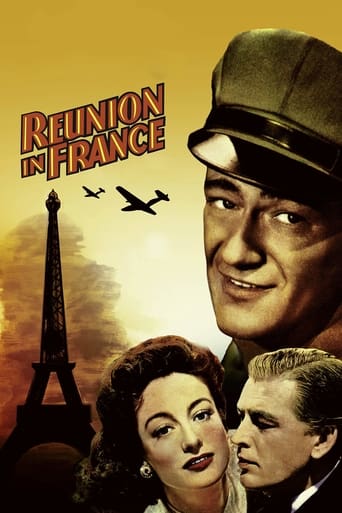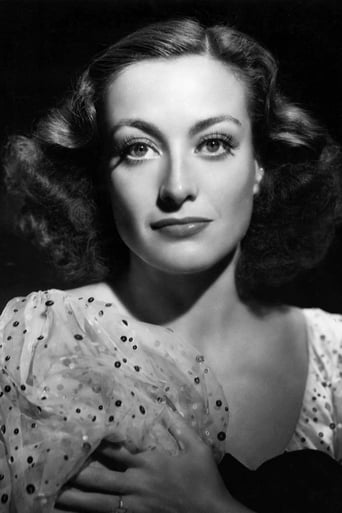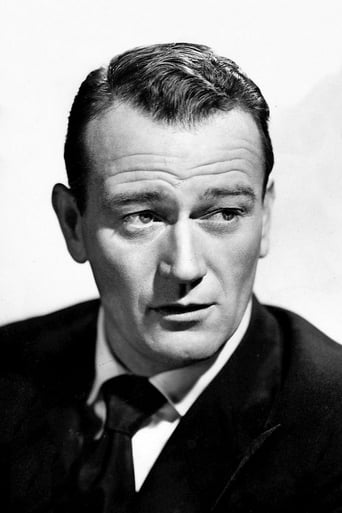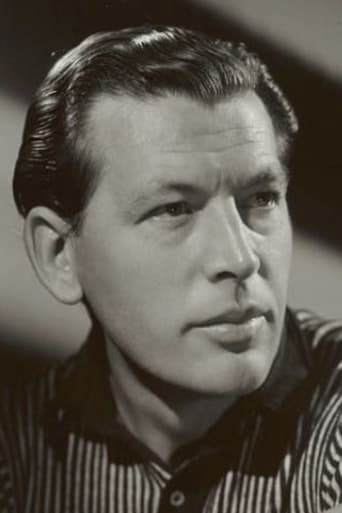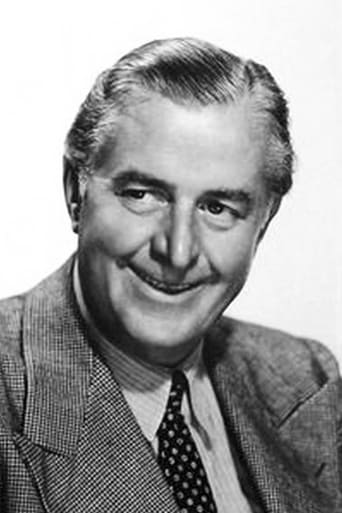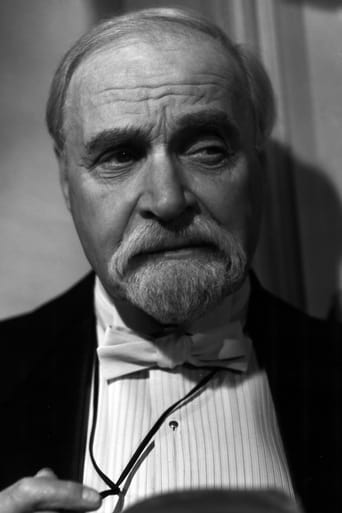SincereFinest
disgusting, overrated, pointless
Comwayon
A Disappointing Continuation
Aubrey Hackett
While it is a pity that the story wasn't told with more visual finesse, this is trivial compared to our real-world problems. It takes a good movie to put that into perspective.
Casey Duggan
It’s sentimental, ridiculously long and only occasionally funny
utgard14
World War II story about a spoiled Frenchwoman (Joan Crawford) whose patriotism is stirred by Nazi invasion. She's married to industrialist Philip Dorn, who she comes to believe is a Nazi collaborator. She meets downed American pilot John Wayne and helps him. Sparks inevitably fly. Joan gives it her best but she's a little miscast. For starters, there are repeated references to her beauty throughout the film but those days were way past Joan by 1942. She was 37 and looks older. Wayne is miscast as well and has no chemistry with Joan. The Nazis are well-represented here with some fine actors playing heavies: Ernst Deutsch, Howard Da Silva, and John Carradine. J. Edward Bromberg has a small but amusing role as French policeman.This is not a bad movie. Just that it could have been so much better with different leads. Mainly of note today as the only film Joan and Duke made together. It's definitely a Joan movie more than a John Wayne one. Though the movie has the expected polish of an MGM film of the time, it's not one of director Jules Dassin's best. Ava Gardner has an uncredited tiny part as a shopgirl. Fans of John Wayne and Joan Crawford will definitely want to check it out.
galwaychase
Here's another fine example of how the shortage of talent in Hollywood during the war lives on in infamy. Once again we are treated to another of Wayne's stinkers. Fortunately for him there was a war on and many of the real actors in Hollywood were either in uniform or the special services.Crawford put it aptly, when she said that if in the afterlife there is punishment for our sins she would be forced to watch this movie over and over again.Another of a all too long list of 1940s, 'good enough', flag waving efforts by Wayne while the real talent in Hollywood including the aging John Ford were away in uniform doing the heavy lifting for the country.Some of the other reviews here did make me chuckle as they reminded me of a comment by an old family friend who actually served in the OSS. He noted, 'if ever I were to meet up with a German who admitted to being a Nazi and a Frenchman who wasn't in the resistance I'd be in the company of a couple honest people'.Two stars for this stinker but they're only for the supporting character actors.
mark.waltz
Sliding down to the end of her MGM years (18 of them!), Joan Crawford got tossed into Hollywood's propaganda machine with this World War II drama about how the invasion of Paris changed the course of its history. Joan seems about as French as I do, speaking French (in English...) as if it were Cary Grant trying to imitate Chevalier or Boyer. Crawford's real-life soon to be husband Philip Dorn plays her French lover who ends up on the side of the Nazis, shocking the anti-Nazi Crawford. Future blacklistee Howard da Silva is ironically cast as one of the Nazi's. Many decades later, he would play MGM's boss Louis B. Mayer opposite Faye Dunaway's Joan Crawford in the notorious "Mommie Dearest". Since Martin Kosleck, Conrad Veidt and George Sanders were unavailable (their Nazi uniforms from other films obviously at the cleaners), John Carradine stepped in, his uniform from other similar films fresh and sparkling.An amusing scene in a fine French dress shop has the portly or otherwise plain German women being nasty or trying to fit into things two sizes too small for them. One of the more glamorous of them is played by the future Lovey Howell of "Gilligan's Island" fame, Natalie Schafer, who has a wonderfully bitchy scene demanding a coat in the shop that Crawford is utilizing to transfer money to the Allies in. John Wayne pops up towards the middle of the film as an American soldier Crawford helps, but Wayne fans will be disappointed by how little screen time he gets. There are all sorts of divided loyalties and counter espionage agents so it is sometimes hard to keep track of who is the good guy and who is the bad guy. MGM perennial Reginald Owen is also present in one of his several hundred films made there.While this will never be considered on par with "Casablanca" or "For Whom the Bell Tolls" as a classic example of the golden age of Hollywood's propaganda machine, it is amusing. Particularly funny is a short sequence of a black singer singing "I'll Be Glad When You're Dead, You Rascal You" to oblivious Germans, smiling stupidly as he insults them and their fuhrer. A montage of Joan walking through Paris after the Nazi's have invaded seems silly, especially since it is obvious that she is going the opposite way than anybody else.
bkoganbing
Reunion in France finds Joan Crawford as an upper class French woman happily engaged to industrialist Philip Dorn and confident that the French army will defend the Maginot Line and the Germans will be defeated once they make a move west. Of course history and the film both tell us it didn't work out that way.When she arrives back in Paris because she's away in the country when the surrender happens, she finds that the Germans have taken over her house to use as office space, but they've permitted her to occupy one room on the ground level with its own entrance to the street. That's a minor inconvenience compared to when she learns that her fiancé is collaborating with the Nazis. Around that time a young flier with the RAF Eagle Squadron, John Wayne, accosts her in the street and gets her to take him in. He's escaped from Nazi custody and looking to get back to Great Britain.This is a minor film in the credits of both John Wayne and Joan Crawford in there one and only film together. Crawford was being slowly eased out at MGM and she knew it. Still she was a professional if nothing else and gives the role her best. The part called for her to look chic and those Adrian gowns were in play again.John Wayne doesn't even get into the film until almost 40 minutes into the story. When he does get in, even though he makes a play for Crawford, the Duke has some real problems as Crawford in order to help him has to play up to Dorn and his Nazi friends. It's not the John Wayne we're used to because it really isn't his film.There's been some criticism by other reviewers that Crawford doesn't sound French. Then again neither does anyone else in the film. The rest of the cast. The cast in fact has a variety of European and American accents, Frenchmen weren't in good supply at that point in Hollywood, either that or they were otherwise committed. Surely Crawford was no more French sounding than Humphrey Bogart in Passage to Marseille.Albert Basserman is the commanding general in Paris and the fellow who Dorn cultivates. John Carradine may be the best one in the film as the Gestapo agent who knows there's something fishy with Crawford, but can't quite prove it. Both the Duke and Joan Crawford had better days ahead of them. Still the film is a curiosity and worth a look.
